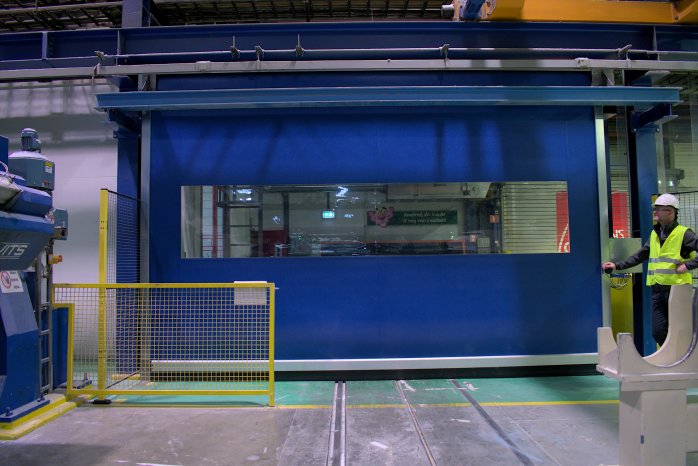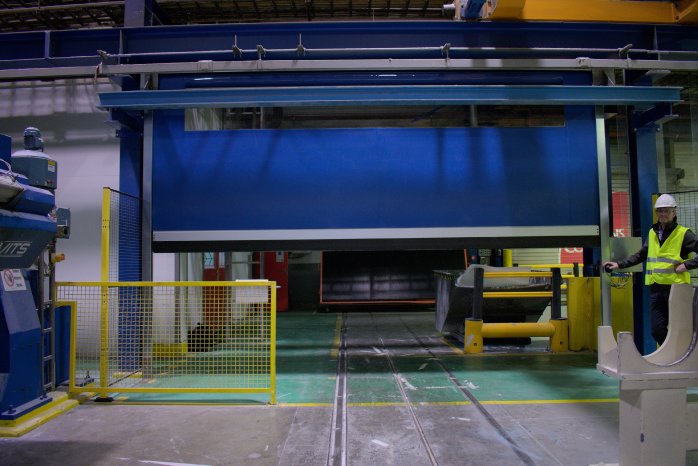Two 160-metre-long plants for producing glass fibre mats, one four metres wide and the other three metres wide. The two machines, built in 1982 and 2003, contain large rollers that turn against each other with a closing pressure of 85 bars. A crane system lifts four-ton drum reels with the finished product out of the machines and places them in another location. After conducting a thorough risk analysis and assessment in these production areas on the basis of the Machinery Directive, Owens Corning in Apeldoorn, the Netherlands, decided to use an EFA-SRT® MS machine safety door to secure the plants.
"According to our risk assessment, we must ensure that employee cannot get near the plant during operation. The plant should therefore be automatically secured during waste disposal, lifting of glass fibre reels and collection of quality samples," says Tieme Zwaan, safety officer at Owens Corning. Normally, this is relatively easy to do if the system has a safety control system installed. However, this is not the case for the older of the two plants. The question therefore arose what would be a cost-effective safety solution for this problem.
"Installing a light curtain around a production area is a fairly common option. When an employee breaks a light beam, the line stops. This option was ruled out due to the high space requirements for our production lines. In addition, there is a delay of another minute from the moment when the light beam is broken until the system is stationary. That is definitely too long," explains Tieme Zwaan.
The risk has been eliminated
EFAFLEX, the specialist in high-speed industrial doors, was commissioned in autumn 2022 to implement a tailor-made high-speed roll-up door. "We chose the space-saving EFA-SRT® MS, a special high-speed roll-up door for machine shielding, as the basis," says the safety officer. "We don't have to keep as much space clear around the plant as a result, and safety is guaranteed. The high-speed door only opens once the system has come to a complete stop."
The door needed to do more than just fulfil a safety function, however. It needed to be big enough for forklifts with waste containers to pass through: five metres wide and three metres tall. The standard version of this high-speed door includes a door leaf made of two-millimetre-thick, transparent PVC with marking strips. However, this door leaf type may accumulate a static charge and attract dust, which is undesirable for an application like this. EFAFLEX has therefore modified the door to have an antistatic Transilon door leaf. This material consists of polyester fabric with an elastomer coating and is widely used for conveyor belts in the food industry.
The control system for the door must meet the highest requirements for an application with a safety function, namely ISO 13949 -1/-2 Category IV, Performance Level E. It connects the door to the production line and the hall crane: when the door is open, the machine is stopped and the hall crane also cannot move. This means that the plant now also complies with future standards. For EFAFLEX, installation involved a lot of steel construction and some challenges owing to the nearby high-voltage line and gas pipeline.
Tieme Zwaan sums things up. "I think we will need to make use of a similar solution a second and third time soon. We are working on new buildings for which this kind of door could be the answer.".




